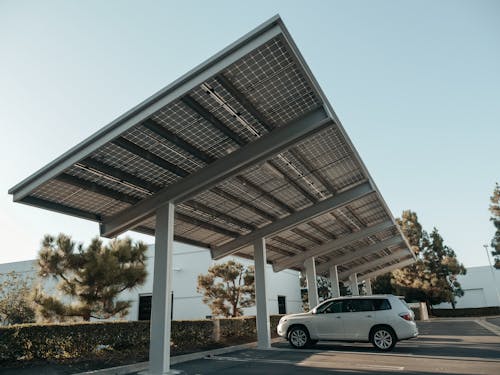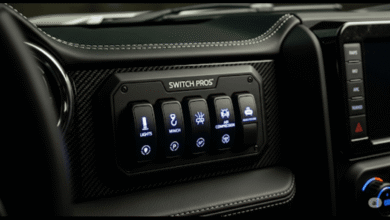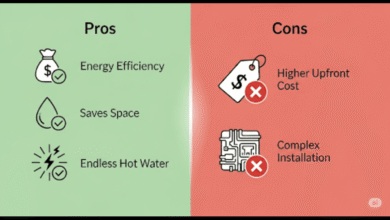Logger Solar: How Solar Data Loggers Are Powering the Renewable Future

As the global push for clean energy accelerates, solar energy systems have become a popular choice for homeowners, businesses, and governments. But generating solar power is only part of the story. To ensure optimal performance, longevity, and efficiency, solar installations need smart monitoring—and that’s where a logger solar system comes in.
This article explores what a solar data logger is, how it works, and why it’s a vital component in modern solar energy setups.
What Is a Logger Solar?
A “logger solar”, or solar data logger, is an electronic device that records and tracks data related to the performance of a solar energy system. It collects real-time information from solar inverters, panels, batteries, and environmental sensors, allowing users to monitor:
- Energy production
- Power consumption
- Panel efficiency
- Temperature
- Voltage and current
- System faults or failures
The data is typically transmitted via Wi-Fi, GSM, or Ethernet to a central platform, where users can analyze it through an app, web dashboard, or software.
Why Solar Data Logging Matters

Installing a solar power system is a long-term investment. Without proper monitoring, system inefficiencies or technical issues can go unnoticed—resulting in lost energy and revenue.
Here’s why a logger solar setup is important:
1. Real-Time Monitoring
Monitor the health of your solar system 24/7 from any device. Know exactly how much energy you’re generating and using.
2. Early Fault Detection
If an inverter fails or a panel underperforms, the logger sends an alert immediately—so issues can be fixed before energy is wasted.
3. Performance Optimization
Analyzing logged data can reveal trends, allowing you to tweak angles, clean panels, or upgrade components for better efficiency.
4. Remote Maintenance
For large-scale solar farms or installations in remote locations, data loggers enable remote diagnostics without on-site visits.
Key Features of Logger Solar Systems
Different brands and models offer different features, but here are common capabilities you’ll find in most solar data loggers:
- Multi-device integration (inverters, meters, weather sensors)
- Cloud-based data storage
- Mobile app access
- Real-time graphing and reporting
- Customizable alerts and notifications
- Historical performance analysis
- Energy export/import tracking (especially for grid-tied systems)
Popular Applications of Logger Solar Devices
| Sector | Use Case |
|---|---|
| Residential | Monitor home solar production & consumption |
| Commercial | Analyze building energy efficiency & ROI |
| Industrial | Detect panel degradation or system faults early |
| Utility-scale | Manage data from hundreds or thousands of panels |
| Educational | Track performance for learning or research purposes |
Integration with Smart Systems
Modern logger solar devices often integrate with IoT platforms, smart meters, and energy management systems (EMS). This allows for automation, such as:
- Adjusting load usage based on peak generation
- Activating energy storage
- Selling surplus energy back to the grid at optimal times
How to Choose the Right Solar Logger
Here are some factors to consider:
- Compatibility: Ensure the logger works with your inverter and system architecture.
- Connectivity: GSM, Wi-Fi, RS485, or Ethernet—choose based on your site conditions.
- Data Interval: Some loggers record every 5 minutes, others hourly.
- User Interface: Check if the app/dashboard is user-friendly.
- Warranty & Support: Choose a brand that offers updates, support, and documentation.
Some well-known solar logger brands include:
- SolarEdge
- SMA Sunny WebBox
- Fronius Solar.web
- Huawei SmartLogger
- Growatt ShineLink
FAQs About Logger Solar
Q1: What does a logger solar actually do?
A: A logger solar continuously records performance data from your solar system and sends it to a user interface so you can monitor energy generation, detect issues, and improve efficiency.
Q2: Is a solar data logger necessary for residential setups?
A: While not mandatory, it is highly recommended. It helps detect faults early, ensure optimal output, and track your return on investment.
Q3: Can I install a logger solar system myself?
A: Some plug-and-play loggers are easy to install, especially for small systems. However, for accurate data and safe integration, professional installation is advised.
Q4: How does a solar logger connect to my system?
A: Typically, via RS485, Modbus, Wi-Fi, or Ethernet. It communicates with the inverter and other devices to collect and send data.
Q5: Does a solar data logger need internet?
A: Many do, especially those with cloud access and remote dashboards. However, some can operate offline and store data locally.
Q6: Are there ongoing costs?
A: Some brands may charge for cloud access or advanced analytics, but basic monitoring is usually free with most systems.
Q7: Can I use one logger for multiple inverters?
A: Yes, advanced loggers can support multiple inverters or even an entire solar farm, depending on the model.
Final Thoughts
In the age of smart energy, simply generating solar power is no longer enough. With a logger solar setup, you gain control, insight, and peace of mind—knowing your solar investment is performing at its best.
Whether you’re a homeowner, facility manager, or solar installer, a good solar data logger is one of the smartest upgrades you can make to any solar system.




